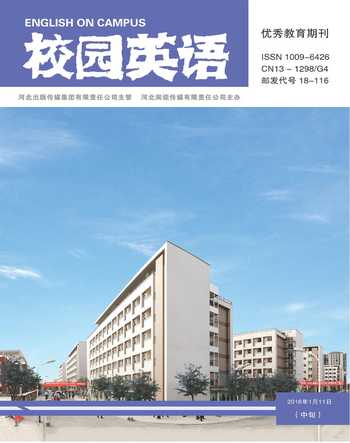Syntactic Problems and Its Solutions in Sci—tech C—E Translation
【Abstract】Scientific C-E translation, as part and parcel of the translation field, plays an important role in the internationally scientific and technological exchange. Therefore, some urgent issues such as how to achieve communicative function of translation, what kind of translation theory can give guidance to translation practice, and how to improve the quality in scientific C-E translation confront researchers and scientific and technological workers. Faced with these problems, this paper presents some guiding principles for translation.
【Key words】effective communication; syntactic problem
In the C-E translation for science and technology, the difference of syntactic structure corresponds to the distinction of thinking and expression, which determines the translation equivalence that cannot exist between the source language and target language. As an isolated language, Chinese stresses on parataxis without relying on the subject-predicate framework in English. A Chinese sentence presents a characteristic of openness without restriction of encapsulation and morphology, discrete and brief. While English focuses on hypotaxis, and is reflected as completeness and independence, the long sentences whose modifiers are just like attachment to the trunk, is more complicated. So, its important to emphasis on the proper transformation of the two different languages. In this part, the author will analyze C-E translation of KEM/DEM Hybrid Constructions of Public Key Encryption and Signcryption to attempt to analyze the effective ways to handle the syntactic problems in the translation practice and explore the strategies of translation for science and technology.
1. Transformation of Short Sentence and Long Sentence
The use of long sentences in C-E translation for science and technology makes the article rigorous and logical. This is because EST states scientific facts, scientific phenomenon and expresses the internal relations of things and explains some technical terms.
Example: 2003年,Al-Riyami和Paterson提出了无证书公钥密码学(CLPKC)的概念,旨在解决IBC的密钥托管问题(PKG掌握所有用户的私钥),同时保留不需要公钥证书的优点。这一目标是通过把用户私钥分成两部分来实现的,一部分由用户自己选取,另一部分由系统的密钥生成中心(Key Generation Center, KGC)产生。
译文: In 2003 year, Al Riyami and Paterson proposed the concept of CLPKC in order to solve the key escrow problem of IBC (PKG masters all the users private key), while retaining the advantages that it does not require the public key certificate, which is achieved through separating the users key into the public and private one where the one is got by user selection, the other is generated by Key Generation Center.
Generally speaking, long sentences appear frequently in EST in order to accurately express some complex concepts; many EST articles often choose long sentences to make the logic and structure compactly. Long sentences which are often used in EST are the common linguistic phenomenon. Therefore, in the above translation, the long sentence used is more complete and compact in both meaning and structure where the main clause is “Al Riyami and Paterson proposed the concept of CLPKC”, the remainder of the whole sentence can be composed of purpose adverbial, adjoining adverbial, and attributive clause.
2. Transformation of Active Voice and Passive Voice
In Chinese, the active voice is usually used, while the expression of EST has an objective principle. So it tries to avoid using the first person and the second person. John Swales, a professor of Leeds University, does a statistical analysis that at least one-third of sentences use the passive voice in the EST articles. He comments, that this kind of articles focuses on narration and reasoning, emphasizing on object and accuracy. It often uses reasons and arguments to prove something. Using too much of the first person and the second person causes the impression of subjectivity. So in the EST, authors try to use the third person to narrate and choose the passive voice. In addition, Swales also points out that this kind of article often puts the important information in the heads of sentences, in the subject part.
3. Conclusion
Translation, a very difficult task, requires a translator to have a strong sense of responsibility, copious knowledge and rigorous attitude. As we all know, translation is not just a transformation of two languages. The translator should make great effort to constantly update their knowledge and improve the translation quality to eventually achieve the accuracy and coherence.
Reference:
[1]Bian,Jianhua.Discussion about Skopos Theory—four Internet talks with Professor Christiane.Nord[J].中国翻译,2006a(1):44.
[2]Munday,J.Introducing Translation Studies:Theories and Applications[M].London and New York:Routledge,2001.
作者简介:赵元(1989-),陕西咸阳人,陕西中医药大学外国语学院助教,主要研究方向为英语教学法及笔译。

